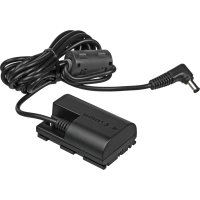Is there any setting within the time lapse function of the EOS R that would allow me to capture an outdoor scene that goes from day to night? I set the time lapse to re-evaluate the exposure for each frame, but there still seems to be a limit to how much the camera can (or will) adjust exposure during a time lapse. Initially I just set the time lapse video mode to smart auto, thinking it could adjust shutter speed, aperture, and ISO as much as it needed to maintain a good exposure. However, the shutter in auto mode seems to max out at what the camera feels would be a safe shutter speed for hand-held shooting. Is there a way to adjust this? Obviously pretty much any time lapse will be taken with a camera being held totally stationary, so it's frustrating that the camera cannot seem to allow me to set it to use shutter speeds slower than a hand held shutter speed. I even tried setting it to shutter speed priority mode and forcing it to use a 1 second shutter at all times. I figured I could put an ND filter in front of the camera during the day, and then remove it at night. However for some reason I don't think the camera varies the aperture in time lapse mode when the camera is set to shutter priority setting.
Also, I tried to run a two day long time lapse yesterday, but for some reason the camera seems to have stopped recording overnight last night. Again, I have no idea why. I'm running it off of a third party AC adapter, so batteries are not an issue. Oddly, the battery meter on the camera sometimes shows only two bars, and if left on for a while, it flashes red, even on this wall adapter. What is the deal with that? Maybe this caused my timelapse to be cut short? However, the time lapse was saved up to the point it cut out, leading me to believe that it wasn't a power failure, otherwise I would have expected to lose the whole time lapse.
Also, I tried to run a two day long time lapse yesterday, but for some reason the camera seems to have stopped recording overnight last night. Again, I have no idea why. I'm running it off of a third party AC adapter, so batteries are not an issue. Oddly, the battery meter on the camera sometimes shows only two bars, and if left on for a while, it flashes red, even on this wall adapter. What is the deal with that? Maybe this caused my timelapse to be cut short? However, the time lapse was saved up to the point it cut out, leading me to believe that it wasn't a power failure, otherwise I would have expected to lose the whole time lapse.

